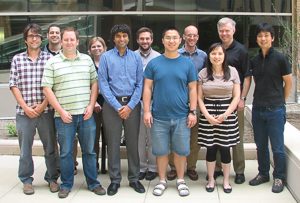Mission
To develop and translate technical innovations in non-invasive and quantitative imaging for improved care of patients with diseases of the liver and abdomen.
Who, What, and Why?
The University of Wisconsin Liver Imaging Research Program (LIRP) is a diverse multidisciplinary group of physicists, engineers, radiologists, surgeons, hematologists, endocrinologists, pathologists and pediatricians interested in the advancement of human health through improved abdominal imaging technologies. The LIRP focuses on development and translation of new imaging methods, particularly MRI, for improved detection and quantification of diseases affecting the abdomen.

The LIRP is an active NIH-funded group that performs research in technical development and translation of new imaging methods to assess liver disease. Specific areas of research interests include development of new MRI methods for quantification of abdominal adiposity, liver fat, liver iron overload and other features of diffuse liver disease, quantification of perfusion in liver tumors, hemodynamics of portal hypertension and the use of new contrast agents in liver and biliary diseases. More recent projects include advanced methods for diffusion weighted imaging and imaging near metallic implants. The group focusses heavily on developing and validating quantitative imaging biomarkers that are accurate, precise, robust and reproducible.